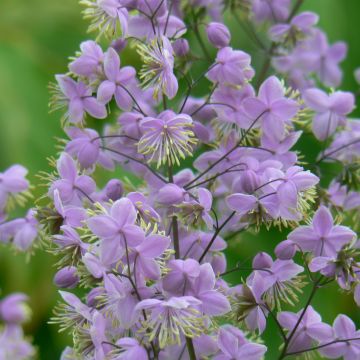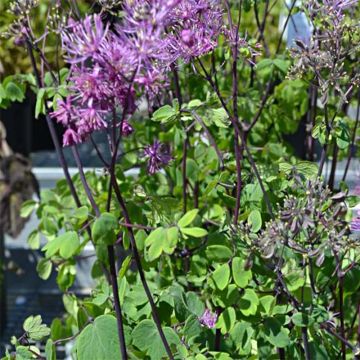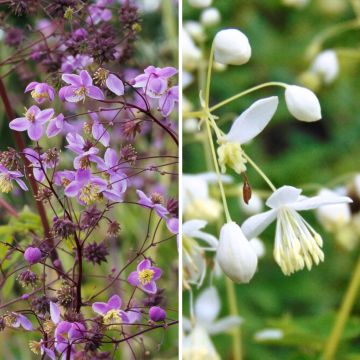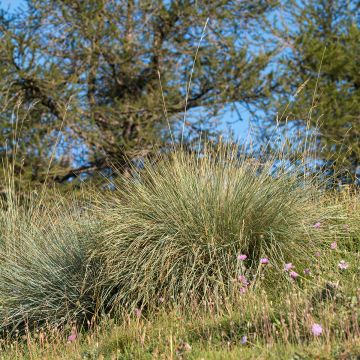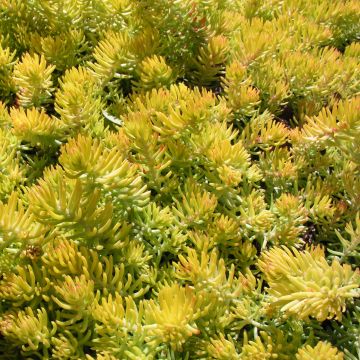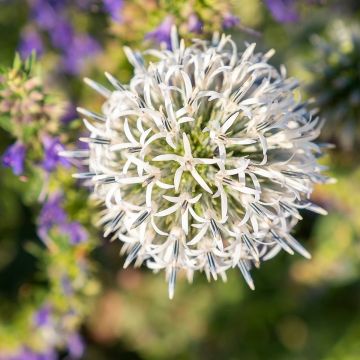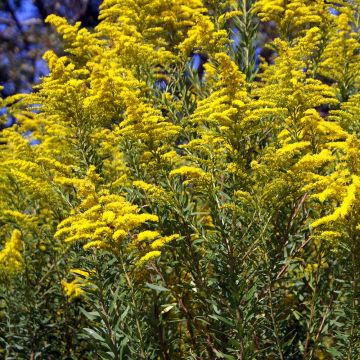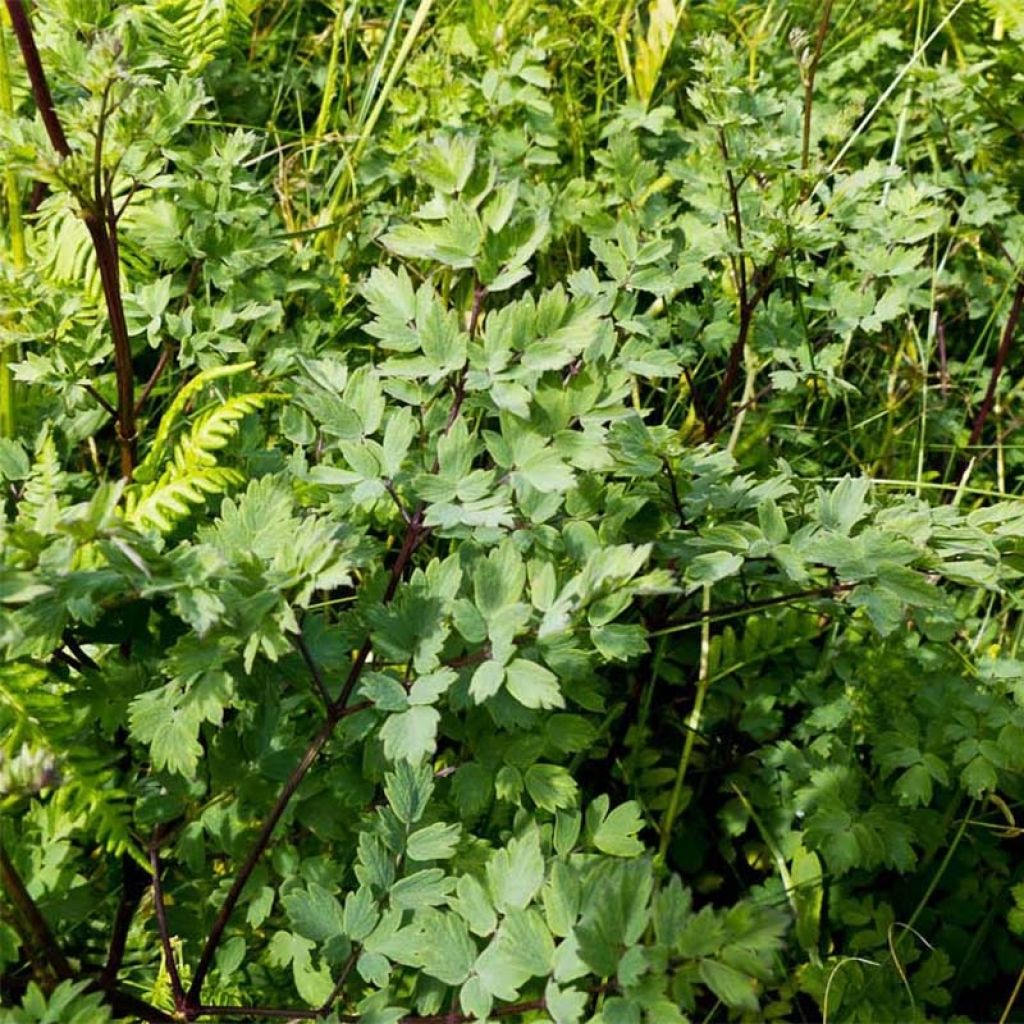

Thalictrum minus Adiantifolium - Meadow-rue
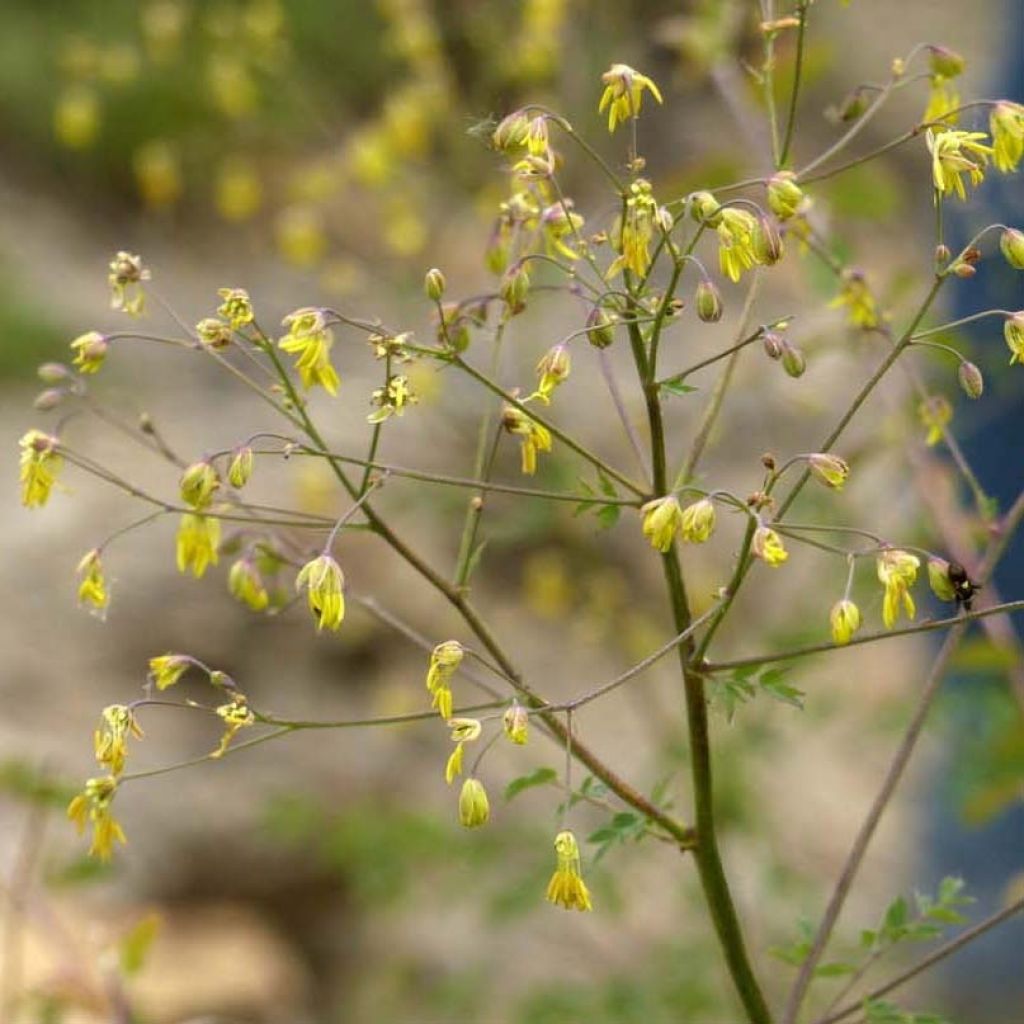

Thalictrum minus Adiantifolium - Meadow-rue
Thalictrum minus Adiantifolium - Meadow-rue
Thalictrum minus Adiantifolium
Lesser Meadow Rue
This plant carries a 12 months recovery warranty
More information
We guarantee the quality of our plants for a full growing cycle, and will replace at our expense any plant that fails to recover under normal climatic and planting conditions.
From €5.90 for pickup delivery and €6.90 for home delivery
Express home delivery from €8.90.

Does this plant fit my garden?
Set up your Plantfit profile →
Description
Thalictrum minus 'Adiantifolium' is a plant that owes its name first and foremost to its modest size, and then to the appearance of its finely cut foliage, which somewhat resembles that of ferns in the Adiantum genus. While this lovely selection is primarily appreciated for the lightness of its vegetation, its summer flowering which is slightly greenish yellow, bright and airy, is an additional charming asset. This delightful perennial, which thrives in dappled sunlight, finds its place in a wooded garden, along a path for example. It flourishes in any not too dry, well-drained soil, even with a tendency towards limestone.
Thalictrum minus, also known as Lesser Meadow-rue, is a herbaceous perennial plant with tufted and rhizomatous but non-invasive clumps, native to Europe, Asia, Africa, and North America. It is a species with highly variable appearance, from which horticulturists have selected very beautiful forms, such as Adiantifolium.
Starting from spring, the plant presents a rather bushy and dense habit. At maturity, it will reach about 60 cm (24in) in height when flowering and will spread slowly through its rhizomes across at least 50 cm (20in) of ground. Its upright and angular stems are marked with stripes or furrows. They bear leaves that are generally triangular, as long as they are wide, deeply cut into small leaflets that do not exceed 1.5 cm (1in) in width. These leaflets also have highly cut edges, somewhat like those of flat-leaf parsley. Their colour is a slightly bluish medium green, similar to that of columbines. The flowering takes place in summer, usually in July-August. From the foliage tuft, thin and sturdy green stems rise to a height of about 60 cm (24in), depending on the growing conditions. They form loose, terminal and axillary panicles, well-branched, composed of small cup-shaped flowers, inclined, with four creamy yellow sepals enhanced by prominent greenish stamens. Individually, these flowers are quite inconspicuous, but their abundance gives the panicles a beautiful cloudy appearance. Not liking the competition of nearby roots, a planting distance of 40 cm (16in) around its base should be respected. The Meadow-rues, which are rather slow to establish, will become more and more beautiful over time. Thalictrum minus does not tolerate the combination of heat with very wet soil.
This Meadow-rue prefers semi-shaded areas of the garden, bright but not scorching, and requires less water than most of its counterparts, as suggested by its natural habitat. With its delicate foliage of great freshness, as well as its airy appearance, it will be perfect to add a light touch to other plants in the garden. It will be very effective in contrast with less delicate perennials (Bergenia, Hosta), as well as at the edge of shrub borders, by a carpet of lambs' ears or Ajuga reptans for example. It can also be combined with small shrubs with purple foliage (Physocarpus, Berberis), orange or pink daylilies, botanical peonies...
Report an error about the product description
Thalictrum minus Adiantifolium - Meadow-rue in pictures




Flowering
Foliage
Plant habit
Botanical data
Thalictrum
minus
Adiantifolium
Ranunculaceae
Lesser Meadow Rue
Cultivar or hybrid
Other Thalictrum - Meadow Rue
Planting and care
Despite its delicate and fragile appearance, Thalictrum minus Adiantifolium is a hardy and low-maintenance perennial, not very demanding in terms of soil.
It simply needs to be planted in partial shade or even full shade, in a moist to wet soil, rich in organic matter and well-drained, without too much limestone. It is possible to establish it in the sun, as long as the soil remains moist and there is ambient humidity around the plant. Planting can be carried out in spring or autumn. Planting at the base of a north or east-facing wall is ideal. Don't hesitate to amend the soil with compost every year to improve winter drainage and facilitate root development. Also, don't forget to water regularly during dry and hot periods. Regularly deadhead the faded flowers to prolong the flowering period. Losing its leaves in autumn and completely disappearing in winter, it will only reappear in spring quite late. Therefore, it is advisable not to cut the plant down in autumn, so as not to forget its location the following spring.
Being a bit slow to establish, it will delight the gardener over the years! Due to its large size, staking may be necessary, especially if this Meadow Rue is used as a standalone plant or in a windy location. To avoid this inconvenience, it is recommended to plant it in the midst of other plants and bushes, against which it can lean. Dividing the clumps is done in March-April, by cutting the clump into several pieces with a spade, but the divisions take a long time to establish. Highly resistant to diseases, it may, however, be susceptible to powdery mildew during periods of drought and to slug attacks when young shoots start to appear.
Planting period
Intended location
Care
-
, onOrder confirmed
Reply from on Promesse de fleurs
Summer flowering perennials
Haven't found what you were looking for?
Hardiness is the lowest winter temperature a plant can endure without suffering serious damage or even dying. However, hardiness is affected by location (a sheltered area, such as a patio), protection (winter cover) and soil type (hardiness is improved by well-drained soil).

Photo Sharing Terms & Conditions
In order to encourage gardeners to interact and share their experiences, Promesse de fleurs offers various media enabling content to be uploaded onto its Site - in particular via the ‘Photo sharing’ module.
The User agrees to refrain from:
- Posting any content that is illegal, prejudicial, insulting, racist, inciteful to hatred, revisionist, contrary to public decency, that infringes on privacy or on the privacy rights of third parties, in particular the publicity rights of persons and goods, intellectual property rights, or the right to privacy.
- Submitting content on behalf of a third party;
- Impersonate the identity of a third party and/or publish any personal information about a third party;
In general, the User undertakes to refrain from any unethical behaviour.
All Content (in particular text, comments, files, images, photos, videos, creative works, etc.), which may be subject to property or intellectual property rights, image or other private rights, shall remain the property of the User, subject to the limited rights granted by the terms of the licence granted by Promesse de fleurs as stated below. Users are at liberty to publish or not to publish such Content on the Site, notably via the ‘Photo Sharing’ facility, and accept that this Content shall be made public and freely accessible, notably on the Internet.
Users further acknowledge, undertake to have ,and guarantee that they hold all necessary rights and permissions to publish such material on the Site, in particular with regard to the legislation in force pertaining to any privacy, property, intellectual property, image, or contractual rights, or rights of any other nature. By publishing such Content on the Site, Users acknowledge accepting full liability as publishers of the Content within the meaning of the law, and grant Promesse de fleurs, free of charge, an inclusive, worldwide licence for the said Content for the entire duration of its publication, including all reproduction, representation, up/downloading, displaying, performing, transmission, and storage rights.
Users also grant permission for their name to be linked to the Content and accept that this link may not always be made available.
By engaging in posting material, Users consent to their Content becoming automatically accessible on the Internet, in particular on other sites and/or blogs and/or web pages of the Promesse de fleurs site, including in particular social pages and the Promesse de fleurs catalogue.
Users may secure the removal of entrusted content free of charge by issuing a simple request via our contact form.
The flowering period indicated on our website applies to countries and regions located in USDA zone 8 (France, the United Kingdom, Ireland, the Netherlands, etc.)
It will vary according to where you live:
- In zones 9 to 10 (Italy, Spain, Greece, etc.), flowering will occur about 2 to 4 weeks earlier.
- In zones 6 to 7 (Germany, Poland, Slovenia, and lower mountainous regions), flowering will be delayed by 2 to 3 weeks.
- In zone 5 (Central Europe, Scandinavia), blooming will be delayed by 3 to 5 weeks.
In temperate climates, pruning of spring-flowering shrubs (forsythia, spireas, etc.) should be done just after flowering.
Pruning of summer-flowering shrubs (Indian Lilac, Perovskia, etc.) can be done in winter or spring.
In cold regions as well as with frost-sensitive plants, avoid pruning too early when severe frosts may still occur.
The planting period indicated on our website applies to countries and regions located in USDA zone 8 (France, United Kingdom, Ireland, Netherlands).
It will vary according to where you live:
- In Mediterranean zones (Marseille, Madrid, Milan, etc.), autumn and winter are the best planting periods.
- In continental zones (Strasbourg, Munich, Vienna, etc.), delay planting by 2 to 3 weeks in spring and bring it forward by 2 to 4 weeks in autumn.
- In mountainous regions (the Alps, Pyrenees, Carpathians, etc.), it is best to plant in late spring (May-June) or late summer (August-September).
The harvesting period indicated on our website applies to countries and regions in USDA zone 8 (France, England, Ireland, the Netherlands).
In colder areas (Scandinavia, Poland, Austria...) fruit and vegetable harvests are likely to be delayed by 3-4 weeks.
In warmer areas (Italy, Spain, Greece, etc.), harvesting will probably take place earlier, depending on weather conditions.
The sowing periods indicated on our website apply to countries and regions within USDA Zone 8 (France, UK, Ireland, Netherlands).
In colder areas (Scandinavia, Poland, Austria...), delay any outdoor sowing by 3-4 weeks, or sow under glass.
In warmer climes (Italy, Spain, Greece, etc.), bring outdoor sowing forward by a few weeks.


































